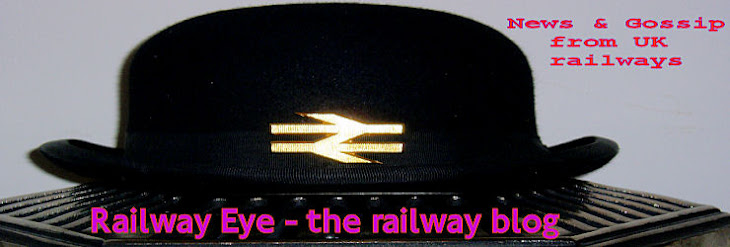This just in from Robert Wright over at the 'Pink 'Un'...
"Ithuriel is perhaps being a little disingenuous in his recent piece on the cost of French high-speed rail.
"I've regularly seen the figures the French quote for building their lines and simply don't believe any of them.
"Do you think they include half the costs the British figures do?
"Is there a cost in there for diversion of trains on existing routes when the building work interferes with them? But is that not still a cost the railways have to bear? Do you think French municipalities desperate to have a high-speed rail station charge RFF all the legal costs of getting planning permission, as I'm sure happens in Britain? I am certain many of the costs of such a project stay hidden in continental Europe and become exposed in Britain.
"On top of all this, the LGV Méditerranée is a relatively short stretch of line from Lyons to Marseilles through largely empty countryside with few interactions with the classic rail network.
"The Crossrail work will involve rebuilding entirely some of the busiest bits of the UK rail network whilst services are maintained.
"Whilst not surprised the costs appear similar I'd argue that the Crossrail money is probably rather better spent."
UPDATE: This just in from Ithuriel...
Busiest bits?
Reading remodelling, electrifying from Airport Junction to Maidenhead (sorry Reading, you'll have to use diesels) and what else?
In modern money the East Coast Main Line electrification cost under £1 billion, inculding resignalling and new trains.
Now that was a real project.
UPDATE: Robert Wright responds...
I'm fascinated by Ithuriel's defence of the ECML electrification, which is so often held up as an example of how these things should be done.
What I'd love to see is a costing for that project that includes the very low original cost of doing it, the cost of train disruption since as a result of the under-specification of the overhead line and the costs incurred so far and likely to be incurred in future putting the worst bits of it right.
The sums might not look quite as magnificent...
UPDATE: Ithuriel draws his spear...
ECML electrification was under-specified in only two respects.
1) The power supply requirement was based on a timetable which did not allow for the expansion in the timetable two decades after the specification was given to the engineers. Thus supply points have had to be strengthened.
2) The wind specification in the 1980s did not know about global arming.
Wind speeds are now higher than the design case.
But, this is irrelevant compared with what happened after 1996, when track maintenance was privatised. Briefly, maintenance of the OHLE was neglected and the importance of aligning the catenary with the tracks below was overlooked..
Finally, the introduction of the Eurostar, with the French GPU pantograph designed for TGV OHLE imposed much higher forces on the contact wire and catenary than the pantographs on the IC225 trains which ran successfully at over 140 mph..
As a result the neglected and abused OHLE began to fail.
A classic case of nurture, not nature.
UPDATE: Robert responds...
I don't want to prolong my debate with Ithuriel unnecessarily and I know anecdotal evidence is useless.
But his points do not square with my experience of using the ECML regularly just after electrification.
There were regular, serious overhead line failures in 1991 and 1992, long before Eurostars ever ran on the line.
I even got a complimentary first-class return from the InterCity press office when, in an early bit of journalistic endeavour, I started asking questions about what the problem was.
So I'm far from sure privatisation and GNER's Eurostars are entirely to blame...
This topic is now closed in case anyone starts asking embarrassing questions about who in the InterCity press office bought off disgruntled hacks with free tickets...
Hulleys’ Closure - My Thoughts
3 weeks ago





